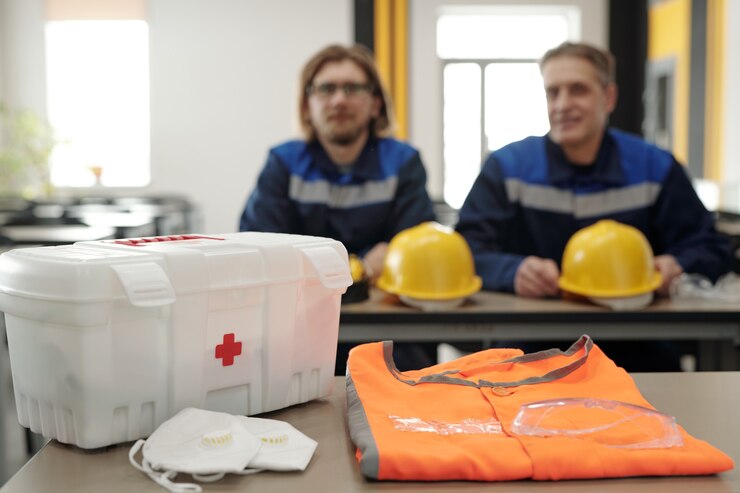When you’re thinking about learning CPR (Cardiopulmonary Resuscitation), one of the most common questions is, How long is CPR training? Whether you want to be prepared for emergencies at home, work, or in public, getting CPR certified can make a life-saving difference. The good news is that CPR training is not only accessible but also doesn’t take a lot of time to complete. In this article, we’ll break down how long it takes to get certified in CPR, what to expect from the training, and why it’s worth considering for anyone.
What Is CPR Training?
CPR training teaches you how to help someone who is having a medical emergency, such as a heart attack or breathing problems. The goal of CPR is to keep the blood flowing to the brain and other important organs until professional medical help arrives. The training covers techniques like chest compressions and rescue breaths that can save a person’s life when every second counts.
How Long Is CPR Training?
Now, let’s get to the question you’re probably asking: How long is CPR training? Generally, CPR training can take anywhere from 2 to 5 hours, depending on the type of course you take and whether it’s in-person or online.
Here’s a closer look at different types of CPR courses:
- Basic CPR Course (2-3 hours): This type of course is often for the general public. It focuses on hands-on CPR and is designed to be quick and straightforward. Many workplaces, schools, and community centers offer these courses to teach people basic life-saving skills.
- CPR/AED (Automated External Defibrillator) Course (3-4 hours): If you’re taking a course that includes AED training, it will likely take a bit longer, around 3 to 4 hours. AED devices are used to restart the heart, and learning how to use one is an important part of helping someone during a cardiac arrest.
- CPR/First Aid Course (4-5 hours): Some courses combine CPR with first aid training, which takes about 4 to 5 hours. First aid training teaches you how to handle various emergencies like cuts, burns, and fractures, alongside CPR.
- Healthcare Provider CPR (4-5 hours): For those in the healthcare field, CPR courses can take longer, around 4 to 5 hours. These courses go into more detail, covering advanced life-saving techniques like two-person CPR and how to use a bag-mask device.
Online vs. In-Person CPR Training
Another factor that can influence how long it takes to complete CPR training is whether you choose an online or in-person course.
- In-Person CPR Training: This is the traditional way to get certified. You attend a class led by a certified instructor who teaches you the techniques and provides hands-on practice. While in-person courses are highly effective, they tend to take longer, often closer to 4-5 hours, because of the added time needed for practice and questions.
- Online CPR Training: Online courses offer more flexibility in terms of time. You can complete the lessons at your own pace, which means you could finish in as little as 2 hours. However, some online courses may require an in-person assessment at the end to make sure you can perform the CPR techniques correctly.
How Long Does CPR Certification Last?
Once you’re certified, your CPR certification is typically valid for two years. After that, you’ll need to take a renewal course to keep your skills up to date. Renewal courses are usually shorter, taking only 1-2 hours to complete.
Why CPR Certification Is Important
Being CPR-certified can make all the difference in an emergency situation. According to the American Heart Association (AHA), immediate CPR can double or triple the chances of survival after a cardiac arrest. The more people who are trained in CPR, the better the chances are for someone to receive help when they need it most.
- In the Workplace: Many employers require CPR certification for their employees, especially in industries like childcare, healthcare, and construction. Even if it’s not required, knowing CPR can make you more valuable as an employee and more prepared to handle emergencies.
- At Home: Accidents can happen at any time, and they often happen when you least expect it. Knowing CPR means you’re ready to act if someone you love needs help before medical professionals arrive.
How to Get Started with CPR Training
If you’re ready to get certified, start by looking for a reputable training provider. Many organizations, like the American Heart Association (AHA) and the Red Cross, offer both in-person and online CPR courses. Choose the course that fits your needs, and be sure to check that the certification is accepted by your employer or organization, if necessary.
Conclusion: Be Prepared to Save Lives
CPR training is a short-term commitment with long-term benefits. In just a few hours, you can learn how to save a life and gain confidence in handling emergencies. Whether you’re looking to meet job requirements or want to be prepared for any situation, CPR certification is a valuable skill that everyone should consider.
Sign up for CPR training with CPR Solutions today and equip yourself with life-saving skills. Our courses are designed for all skill levels and schedules—get certified and make a difference!







